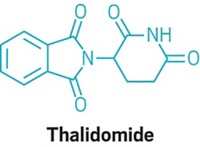Advertisement
Grab your lab coat. Let's get started
Welcome!
Welcome!
Create an account below to get 6 C&EN articles per month, receive newsletters and more - all free.
It seems this is your first time logging in online. Please enter the following information to continue.
As an ACS member you automatically get access to this site. All we need is few more details to create your reading experience.
Not you? Sign in with a different account.
Not you? Sign in with a different account.
ERROR 1
ERROR 1
ERROR 2
ERROR 2
ERROR 2
ERROR 2
ERROR 2
Password and Confirm password must match.
If you have an ACS member number, please enter it here so we can link this account to your membership. (optional)
ERROR 2
ACS values your privacy. By submitting your information, you are gaining access to C&EN and subscribing to our weekly newsletter. We use the information you provide to make your reading experience better, and we will never sell your data to third party members.
Biological Chemistry
Enzyme Mechanism Study Reveals Drug Lead For Rare Disease
Activator molecule restores function of mutated enzyme responsible for some cases of Cornelia de Lange Syndrome
by Stu Borman
August 12, 2014
| A version of this story appeared in
Volume 92, Issue 32
A mechanistic study of enzyme mutations that cause a rare disease has led to the discovery of a potential therapy. Cornelia de Lange Syndrome (CdLS) is a congenital condition that affects some one in 10,000 newborns. It is characterized by intellectual disability, facial abnormalities, and limb deformities. A collaborative team recently found that mutations in the metalloenzyme histone deacetylase 8 (HDAC8) cause about 4% of CdLS cases. David W. Christianson of the University of Pennsylvania and coworkers have now used crystallography and other techniques to show how the compromised structure, function, and stability of HDAC8 mutants can cause CdLS (ACS Chem. Biol. 2014, DOI: 10.1021/cb5003762). They also found that the catalytic activity of the mutant enzymes can be partially restored by a small-molecule activator, N-(phenylcarbamothioyl)benzamide, thus pointing to the first potential therapeutic for CdLS. “While preexisting physical deformities would not be reversed by the administration of an HDAC8 activator, the rescue of catalysis could potentially attenuate development-related manifestations of CdLS, such as progressive neurocognitive impairment,” Christianson says.




Join the conversation
Contact the reporter
Submit a Letter to the Editor for publication
Engage with us on Twitter